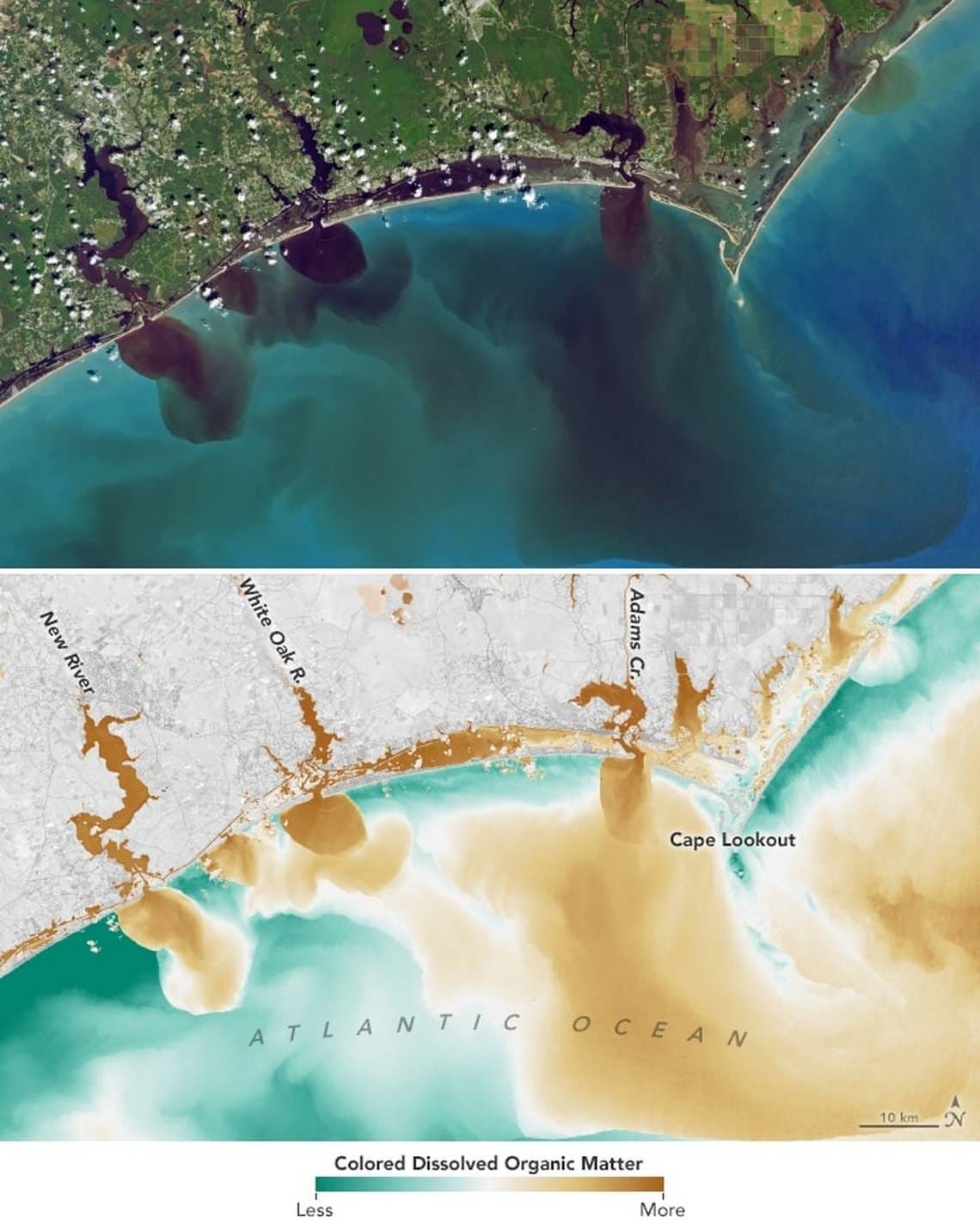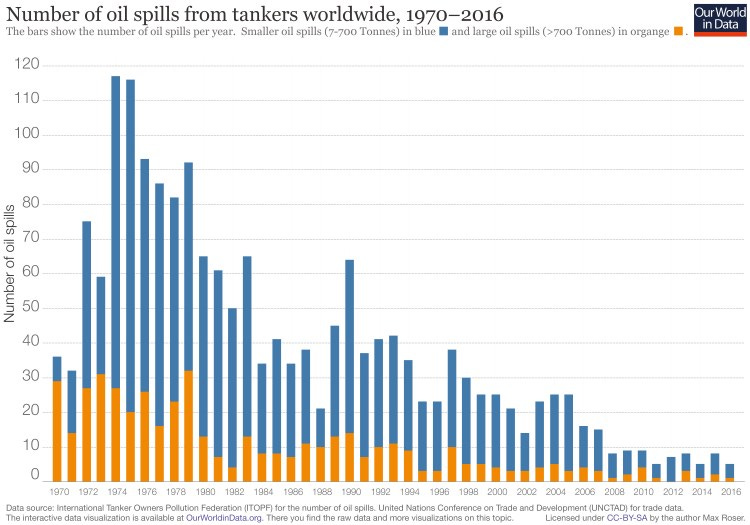The Mother Nature Myth: Part 2
Ever-present life-threatening pollution, species extinctions, and the ongoing destruction of ecosystems are ambient conditions of nature.
Our next step involves confronting the popular misconception that environmental damage and pollution are largely human-specific effects, or that human pollution is somehow uniquely pernicious.
To be clear, pollution simply means mixing something into another that, in sufficient quantities, will endanger, harm, and/or kill some forms of life.
Interestingly, that definition applies to virtually everything. As toxicologists are fond of saying: everything can kill you if it is present in sufficient quantities. Most of our oxygen, for example, began as a life-killing waste product produced by organisms engaged in the process of photosynthesis (via cyanobacteria). As these organisms especially began to thrive and multiply, the amount of this metabolic-poison waste product rapidly multiplied, raising the amount of oxygen in our global atmosphere from less than 5% to the more than 20% we have today. The impact of this waste gas on our atmosphere was catastrophic, extinguishing the great majority of life on this planet.
And yet today, we don’t regard oxygen as a waste-product, as a toxin, or as a pollutant. Why not? Because the life that somehow survived the Great Oxygenation Event continued to adapt over millions and millions of years to the ever-rising oxygen pollution, and it was these single- and simple multi-cell lifeforms that exploded into complex multicellular life during the Cambrian explosion some 500 million years ago.
It took millions and millions of years, but life continued to adapt to the catastrophic, global waste produced by cyanobacteria beginning some 2-2.5 billion years ago.
That was different! It was natural!
Natural or not, it’s the impact that matters: the destruction, the mass extinction, the billions of years of adaptation required for surviving life to recover and adapt.
That’s all I care about: the effect. The cause is interesting and noteworthy, but the effect is critical. But here’s the short of it: pollution is natural and, more to the point, nature is pollution.
You read that right.
Despite the fact that when we think of pollution our minds are immediately drawn to the worst fossil fuel, plastic, and waste pollution caused by humans, we rarely if ever consider that in terms of the suddenness, scale, and quality of pollution, humans are a drop in the bucket, and nothing of what’s contained in that bucket is “clean” or “healthy” or “safe”.
It’s all pollution, all the way down.
When I’m in class lecturing, I like to ask my students if they would drink water from the Han River today. They usually instantly answer no. Then I ask them: if they could go back in time 2000 years, would they drink from the Han River. They usually answer yes, or at least probably. I look at them skeptically then ask them if they would drink the water from a fishbowl in their home, and I wait for the realization to dawn on them: safe, clean drinking water is a very recent human invention (1923).
What you find in nature, everywhere, is water teeming with life and pollution—not human pollution, but rather natural pollution: dirt, bacteria, micro-organisms, fish, decaying fish/animals/flora, fish and animal feces, plants, fungi, salt, seep oil, particulate matter, volatile organic compounds (VOCs), sulfur dioxide, etc. Drinking from (or living in) this virtual toxin tea is variably harmful to every form of life, with those plants and fish and animals who now appear to be living happily amid this water having had to sufficiently adapt to resisting those pollutants (adapting/evolving via suffering/death) over vast expanses of time.
Like oxygen.
“Natural” air is likewise teeming with life and pollution. Whatever “happy medium” (“balance”) we believe exists today came about as a result of the few specimens within each species that were capable of surviving contact with these virtual toxin teas and passing on their better-adapting genes, with the success/failure of their progeny likewise affecting and being affected by the ever-changing qualities of the air/water mediums in which they live/adapt.
And make no mistake, whatever their degree of adaptation, these naturally ever-shifting toxin teas are constantly impacting each species’ life expectancy.
Inventing and Weaponizing the term “Environmental Damage”
Now when we talk about “environmental damage”, what we really mean are significant changes to local, temporary eco-stases within which currently existing life is surviving. The appearance of a set, “balanced” eco-“stasis” is an illusion—an idea that we’ll develop more in the next section. For now, it’s sufficient to note (as a placeholder) that today’s “eco-stasis” is a current stasis, a multi-frame snapshot of an ongoing and ever-shifting process that harms/kills countless forms of life that fail to keep pace.
In 2018, Hurricane Michael slammed into the southern coast of the United States, heaving great tidal waves of saltwater deep into the American landmass. That ocean water drenched the land with saltwater (salt-polluted water for the freshwater-adapted flora/fauna there) and, as the waters receded back into the Gulf of Mexico, carried with them massive tonnage of inland organic material (leaves, tree branches, earth, etc.) into the ocean. This prompted some panic among environmentalists who were rightly concerned about coastal ocean-wildlife die-offs.
This pollution was potentially devastating, and it was entirely natural.
Oil spills are another issue of concern, so it is unfortunate that the issue is likewise fanatically de-contextualized.
The thirteen largest oil spills in human history spilled some 40 million barrels (1 barrel = ~160 liters) of oil into the environment (while we have used over a trillion barrels of oil to date). If we were to account for every drop of oil spilled since we began using oil our total might be twice that number (e.g.: twice 40 million barrels)—but even if it was five times that number (it is absolutely not), it’s important to be mindful of a few crucial points and to look at the natural baseline.
First, the historical trend of human oil spills is plummeting sharply downward even as we use and transport ever more oil over great distances.
Second, humans continue to expend tremendous resources to successfully mitigate/prevent those spills, and continue to develop tools to contain and extract or degrade any oil spilled.
Now, let’s add the natural context.
Nature: the greatest oil polluter of all time.
The most important point to acknowledge is that crude oil is natural and that it isn’t just safely contained in nature, it has been sitting and seeping into ecosystems for tens of millions of years.
Second, while in 2018 all of humanity spilled around 850,000 barrels of oil, the 600 or so natural oil seeps in the Gulf of Mexico alone were responsible for spilling an estimated 1,000,000 barrels of oil in that same year while, globally, the best working estimate is that natural oil seeps disgorge some 4,400,000 barrels of oil into oceans every year, and have been doing so for millions of years.
https://www.itopf.org/knowledge-resources/data-statistics/statistics/
https://www.ncbi.nlm.nih.gov/books/NBK220695/
https://www.nap.edu/read/10388/chapter/4#70
And that’s just ocean “seeps”.
Hundreds of millions of years ago, a tectonic event in Canada squeezed some 1,700,000,000,000 (1.7 trillion) barrels of crude oil all over the Athabasca, Peace River, and Cold Lake regions, creating what are known today as Canada’s oil sands. That oil has been sitting there for millions of years killing flora and fauna, toxifying the earth, and polluting the air, rivers, and lakes. Oil sands can also be found in Venezuela and the Republic of Congo.
So now, Canadians have found a way to essentially extract that oil from the area, arguably adding more “damage” to the multi-million years of damage the oil there has already caused, but this human activity means that, at some future time, that region will eventually be able to thrive better, and more abundant life might return once that particularly concentrated pollutant has been diluted/cleaned.
And yet Greenpeace calls this “Canada’s dirty little secret”, denouncing these Canadians who are profiting by “destroying nature”…
Shall we leave the oil, then? Is that better for nature?
The answer of course is that there is no “better for nature”. Nature is not alive, but life is. And yet, life that survives nature is the absolute exception, rather than the rule.
(continued in Part 3)
Cory Foisy
Assistant Professor
King Jeongjo College of Liberal Arts
Hanshin University
South Korea



